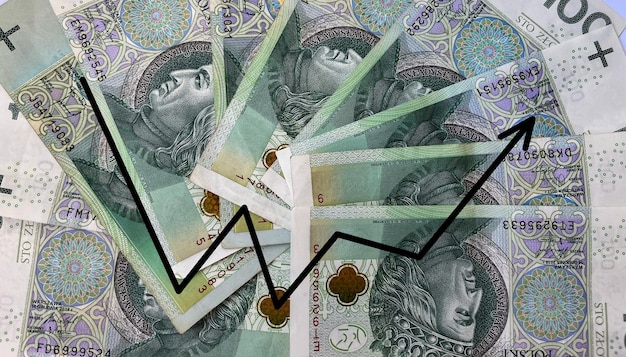New Fed Policy & Your 2025 Budget: What to Expect

The Federal Reserve’s evolving inflation policy for 2025 aims to stabilize prices and employment, directly influencing interest rates, consumer spending, and investment patterns, which will necessitate careful budgeting adjustments for households and businesses across the US.
As 2025 approaches, understanding the New Federal Reserve Policy on Inflation: What It Means for Your 2025 Budget is crucial for every American household and business. The Federal Reserve, often referred to as the Fed, plays a pivotal role in shaping the nation’s economic landscape through its monetary policy decisions.
Understanding the Federal Reserve’s Evolving Mandate
The Federal Reserve operates under a dual mandate from Congress: to achieve maximum employment and maintain stable prices. In recent years, particularly post-pandemic, the challenge of stable prices has taken center stage as inflation surged to decades-high levels. The Fed’s response has been aggressive interest rate hikes, but as the economy normalizes, their approach to inflation is seeing a nuanced evolution. This shift aims to fine-tune economic conditions without inadvertently stifling growth or causing a deep recession.
The Dual Mandate and Its Evolution
The foundation of the Fed’s actions lies in its dual mandate. This commitment means they are constantly balancing the needs of the labor market with price stability. Historically, periods of high inflation often necessitated tough decisions that could impact unemployment. However, the modern Fed seeks to navigate this with more precision, utilizing data-driven insights and forward-looking projections.
* **Maximum Employment:** Ensuring as many people as possible who want to work can find jobs. This involves analyzing labor market indicators like unemployment rates, job openings, and wage growth.
* **Stable Prices:** Aiming for an average inflation rate of 2% over the long run, as measured by the Personal Consumption Expenditures (PCE) price index. This prevents both sustained inflation and deflation, both of which can harm economic stability.
The evolving mandate recognizes that the economic environment is dynamic. Global events, technological advancements, and shifts in consumer behavior all influence how the Fed addresses its objectives. This adaptability means policy adjustments are not a one-size-fits-all solution but a continuous calibration based on real-time economic data.
As we move into 2025, the Fed’s policy on inflation is anticipated to focus on sustained price stability while closely monitoring employment figures. This could mean a more flexible approach to rate adjustments, responding to incoming economic data rather than adhering to rigid pre-set paths. Market participants and consumers alike will need to pay close attention to the Fed’s communications, as their words often signal future actions. The aim is to achieve a “soft landing,” where inflation cools without triggering a significant downturn, a delicate balance indeed.
Analyzing the Key Policy Shifts for 2025
Heading into 2025, the Federal Reserve is expected to continue refining its monetary policy framework, particularly concerning its inflation target and the tools used to achieve it. The shift from a purely reactive stance to a more proactive, data-dependent approach is becoming increasingly evident. This involves a closer look at various economic indicators beyond just the Consumer Price Index (CPI), such as wage growth, supply chain stability, and global economic conditions. The objective is no longer solely about bringing inflation down rapidly, but about anchoring long-term inflation expectations at their 2% target.
Potential Adjustments to the Inflation Target
While the official 2% inflation target remains a cornerstone, the Fed has signaled a greater willingness to allow for temporary overshoots or undershoots as part of an ‘average inflation targeting’ strategy. This means they might tolerate inflation slightly above 2% for a period if it follows a period of below-target inflation, aiming for an average of 2% over time. This flexibility can impact how aggressively the Fed acts with interest rate changes.
* **Average Inflation Targeting:** A strategy where the Fed targets an average inflation rate of 2% over the long run, allowing for temporary deviations.
* **Broader Economic Indicators:** Utilizing a wider range of data points, including labor market specifics and supply chain resilience, to inform policy decisions.
* **Forward Guidance Clarity:** The Fed is likely to enhance its communication strategies, providing more transparent “forward guidance” to markets and the public about its likely future policy path.
This nuanced approach helps prevent deflationary spirals and ensures that the labor market has sufficient room to strengthen without immediate restrictive measures. However, it also introduces more uncertainty for businesses and consumers trying to predict future economic conditions. Therefore, households and businesses must monitor these signals carefully, as they provide critical insights into the future direction of borrowing costs and economic growth. The Fed’s nuanced communication will be key to managing expectations and maintaining market stability.
Impact on Interest Rates and Borrowing Costs
The Federal Reserve’s policy decisions on inflation have a direct and profound impact on interest rates across the entire economy. As the Fed adjusts its federal funds rate target, it influences everything from mortgage rates to business loans and personal credit. For 2025, the direction of these rates hinges heavily on how successfully the Fed navigates the current economic landscape and whether inflation indeed stabilizes at a comfortable level. A restrictive policy, aimed at curbing inflation, typically leads to higher borrowing costs, while a more accommodative stance can lower them.
How Fed Policy Influences Borrowing
When the Federal Reserve raises its target for the federal funds rate, commercial banks typically follow suit by raising their own interest rates. This makes it more expensive for consumers and businesses to borrow money. Conversely, lowering the federal funds rate makes borrowing cheaper, stimulating economic activity. The expectation for 2025 is that the Fed will likely maintain a data-dependent stance, meaning rate changes will be closely tied to observable inflation trends and labor market data.
* Mortgage Rates: Changes in the federal funds rate directly affect the prime rate, which in turn influences variable and fixed mortgage rates. Homebuyers or those looking to refinance in 2025 should anticipate potential fluctuations.
* Credit Card APRs: Most credit cards have variable annual percentage rates (APRs) tied to the prime rate. If the Fed raises rates, credit card debt becomes more expensive, impacting household budgets.
* Auto Loans and Personal Loans: Similar to mortgages, these loan types will see their rates adjust in response to Fed policy, potentially increasing the cost of financing new purchases.
* Business Loans: Small and large businesses rely on loans for expansion, operations, and inventory. Higher rates increase their cost of capital, potentially slowing investment and hiring.
For budgeting purposes, consumers and businesses will need to be agile. If the Fed’s inflation policy for 2025 leans towards continued moderation, implying a need to keep inflation contained, borrowing costs may remain elevated or even increase slightly. On the other hand, if inflation consistently cools faster than anticipated, some easing in rates could occur, leading to more affordable borrowing. Planning for various interest rate scenarios will be essential to ensure financial stability.
Implications for Consumer Spending and Savings
The Federal Reserve’s inflation policy for 2025 will inevitably ripple through the economy, profoundly affecting consumer spending habits and the value of savings. When the Fed actively combats inflation, it often does so by increasing interest rates, which subsequently impacts various facets of personal finance. Consumers grapple with higher borrowing costs, but also potentially more attractive rates on savings accounts. The intricate balance between these forces shapes how much money people choose to spend, save, or invest.

The Push and Pull on Your Wallet
Higher interest rates, a common tool in the Fed’s anti-inflation arsenal, can discourage borrowing for big-ticket items like cars and homes. This cooled demand is intended to reduce upward pressure on prices. However, it also means consumers who rely on credit for everyday purchases might see their costs increase. Simultaneously, higher interest rates make saving more appealing, as banks offer better returns on deposits, promoting a potential shift from spending to saving.
* Reduced Purchasing Power: If inflation remains elevated despite the Fed’s efforts, the same amount of money buys less over time, eroding consumer purchasing power. This impacts essential goods and services, making household budgeting more challenging.
* Debt Management Challenges: For those with variable-rate loans or significant credit card debt, rising interest rates mean higher monthly payments. Prioritizing debt reduction becomes a critical budget component.
* Opportunity for Savers: Higher interest rates can be a boon for savers. Money market accounts, CDs, and savings accounts may offer better returns, rewarding delayed gratification and encouraging financial prudence.
Effective budgeting in 2025 will require a keen eye on these dynamics. Households should consider reducing reliance on high-interest debt and exploring opportunities to maximize returns on their savings. Adjusting spending habits to prioritize needs over wants and hedging against potential price increases through strategic financial planning will be paramount. The Fed’s policy aims for overall economic health, but individual financial resilience depends on proactive adaptation.
Investment Strategies Amidst Policy Changes
The Federal Reserve’s inflation policy has always been a significant determinant of investment performance, and 2025 will be no exception. Changes in interest rates, alongside the Fed’s qualitative and quantitative easing or tightening measures, directly influence asset valuations across stocks, bonds, real estate, and commodities. Investors must adapt their strategies to align with the Fed’s forward guidance and the likely economic outcomes of its actions. A well-informed approach can help protect capital and identify growth opportunities even in a dynamic market.
Navigating the Investment Landscape
When the Fed adopts a restrictive stance to combat inflation, higher interest rates tend to make bonds more attractive relative to stocks, as their fixed returns become more competitive. Growth stocks, which rely heavily on future earnings, can face downward pressure as the cost of capital rises. Conversely, stable, dividend-paying companies or value stocks might perform better. Real estate markets also react significantly, with higher mortgage rates potentially cooling demand and moderating property price growth.
* Diversification is Key: In an uncertain environment driven by evolving Fed policy, a diversified portfolio across different asset classes and sectors can mitigate risks.
* Adjusting Fixed Income Allocations: Bond investors may need to consider shorter-duration bonds to reduce interest rate risk, or explore inflation-protected securities if inflation proves persistent.
* Equity Market Focus: Companies with strong balance sheets, stable cash flows, and pricing power may be more resilient to inflation and rising rates. Sector-specific analysis (e.g., healthcare, utilities) could also reveal opportunities.
* Real Estate Considerations: For real estate investors, a focus on income-generating properties or markets with strong fundamentals might be prudent, rather than relying solely on appreciation.
* Commodities and Alternative Investments: Commodities like gold or certain industrial metals can act as inflation hedges, while alternative investments may offer uncorrelated returns.
Adopting a long-term perspective while remaining flexible enough to make tactical adjustments will be crucial. Regularly reviewing portfolio allocations, understanding the underlying drivers of various asset classes, and staying informed about Federal Reserve communications will empower investors to make more informed decisions for their 2025 budget. The goal is to build a robust portfolio that can withstand potential economic headwinds and capitalize on opportunities that arise from the Fed’s strategic maneuvers.
Preparing Your Household Budget for 2025
Effective financial planning for 2025 demands a proactive approach, especially with the Federal Reserve’s nuanced inflation policy in play. Your household budget will likely feel the effects of ongoing economic adjustments, from the cost of borrowing to the prices of everyday goods. Taking tangible steps now to optimize your financial strategy can help you navigate potential challenges and capitalize on emerging opportunities. It is about building resilience and ensuring your financial goals remain achievable.

Actionable Steps for Financial Resilience
The core of preparing your budget involves understanding where your money goes and finding ways to optimize its flow. This means reviewing existing debts, identifying areas for potential savings, and planning for various interest rate scenarios. Think of it as a financial health check-up, anticipating potential changes and building a buffer against economic shocks.
* Review and Reassess Debt: Prioritize paying down high-interest debt, such as credit card balances. Consider consolidating debt or refinancing existing loans if interest rates become more favorable or if you can secure a lower fixed rate.
* Analyze Spending Habits: Track your monthly expenditures meticulously. Identify non-essential spending that can be reduced or eliminated. Even small, consistent savings can add up over time.
* Boost Emergency Savings: Aim to have at least three to six months’ worth of living expenses saved in an easily accessible, high-yield savings account. This provides a crucial buffer against unexpected financial setbacks.
* Explore Investment Opportunities: Re-evaluate your investment portfolio. Consider adjusting allocations based on the Fed’s likely policy direction and your personal risk tolerance. Look for opportunities in sectors that may benefit from economic stabilization.
* Plan for Inflationary Pressures: Factor potential price increases for essentials like groceries, utilities, and fuel into your 2025 budget. This might involve setting aside a slightly larger buffer for variable expenses.
* Seek Professional Advice: If financial planning feels overwhelming, consult a financial advisor. They can provide personalized strategies tailored to your specific circumstances and goals, helping you navigate the complexities of economic policy changes.
By systematically addressing these areas, you can create a more robust household budget for 2025. The goal is not just to react to the Fed’s policies, but to strategically position your finances to thrive in a dynamically evolving economic environment. Proactive planning ensures that you maintain control over your financial future, regardless of external shifts.
| Key Point | Brief Description |
|---|---|
| 📈 Fed’s Evolving Policy | Shift to data-driven approach, balancing inflation with employment. |
| 💸 Interest Rate Impact | Directly influences mortgages, loans, and credit card APRs. |
| 🛒 Consumer & Savings | Affects purchasing power and returns on savings accounts. |
| 📊 Investment Strategies | Requires diversification, re-evaluation of asset allocations. |
Frequently Asked Questions About the 2025 Fed Policy
The Federal Reserve aims to maintain stable prices, which is typically defined as an average inflation rate of 2% over the long run, as measured by the Personal Consumption Expenditures (PCE) price index. This target helps guide their monetary policy decisions to foster overall economic stability.
The Fed’s policy directly influences the federal funds rate, which impacts a wide range of borrowing costs, including mortgage rates. If the Fed maintains a restrictive stance to control inflation, mortgage rates may remain elevated. Conversely, an easing of policy could lead to lower rates.
Absolutely. If the Fed’s policy results in higher interest rates, savings accounts, money market accounts, and Certificates of Deposit (CDs) may offer more attractive returns. It’s a good opportunity to review your savings vehicles and potentially shift funds to maximize yield.
The Fed’s policy can influence stock market performance. Higher interest rates typically make bonds more appealing, potentially drawing investment away from stocks, especially growth stocks. However, stable inflation and a strong economy can still provide a supportive environment for equity markets.
To prepare your budget, focus on reducing high-interest debt, building or strengthening your emergency savings, and reassessing your investment portfolio. Pay close attention to inflation forecasts and consider adjusting your spending habits to accommodate potential price increases for essential goods and services.
Conclusion
The Federal Reserve’s inflation policy for 2025 is more than just an abstract economic concept; it is a critical determinant of financial well-being for households and businesses across the US. As the Fed navigates its dual mandate of maximum employment and stable prices, its decisions will directly shape interest rates, borrowing costs, consumer purchasing power, and investment returns. Proactive engagement with these policy shifts, coupled with disciplined financial planning, is essential. By understanding the implications for your budget, adapting your spending and savings strategies, and shrewdly approaching investments, you can build resilience and position yourself to thrive in the evolving economic landscape of 2025. Staying informed and flexible will be your greatest assets.





